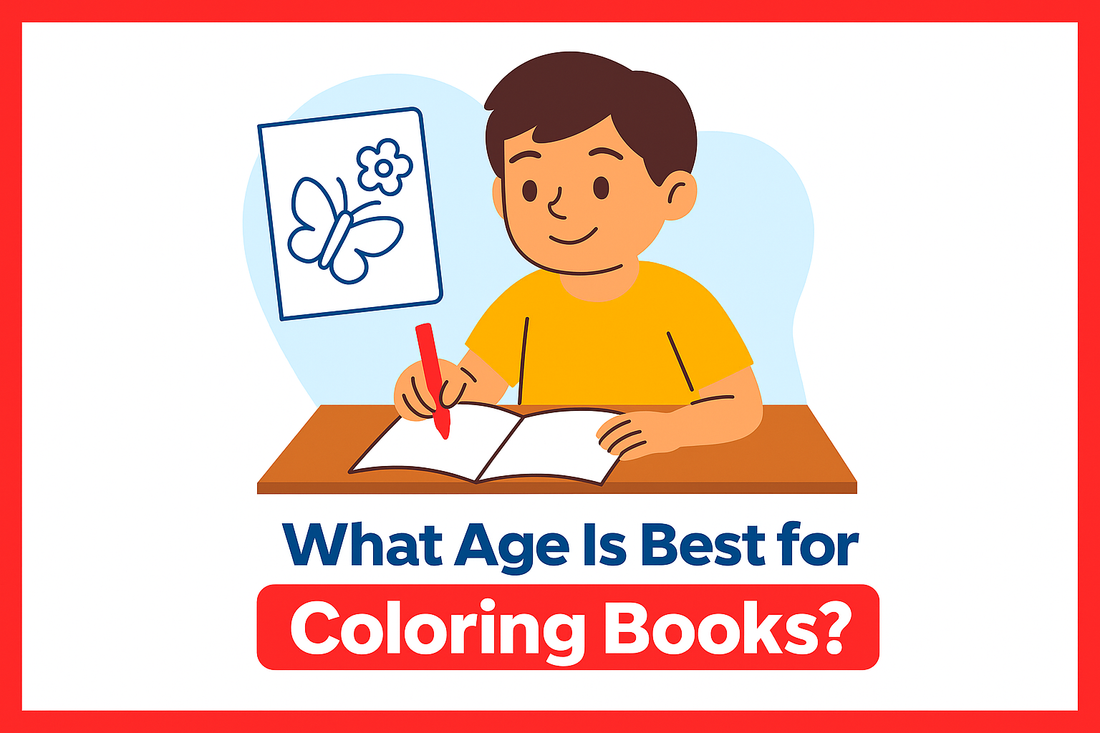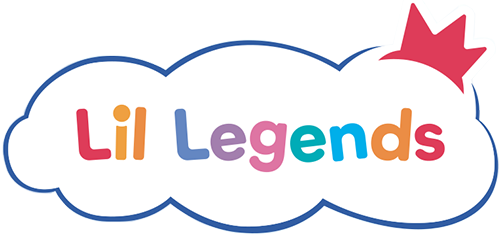
What Age Is Best for Coloring Books?
Share
Coloring books are among the most cherished pastimes for kids globally. They are fun, creative and easy to operate and this is why they are the favorite among kids as well as parents. However, numerous individuals question what age is ideal for coloring books? The thing is that there is no perfect age. Kids of various ages have unique preferences for coloring, so the kind of coloring book you select should align with their developmental stage. From young children drawing for the first time to older kids appreciating intricate patterns, there is always a coloring book suitable for everyone.
The Significance of Coloring Books
Before examining the appropriate age for coloring books, it's beneficial to recognize why they serve as a strong resource for learning and development. It may seem like a simple affair but coloring teaches a lot. When a child holds a crayon and draws something on the paper, they improve their hand strength and practice their motor skills. This will help them in future writing. Coloring improves creativity since the child can select colors and imagine various alternatives.
Concentration is another major advantage of coloring. Using a coloring book allows children to develop patience and concentration, skills that will aid them in school and later in life. It also encourages self-expression because the colors that a child chooses mostly depict his/her mood and personality.
Toddlers and Coloring Books (Ages 1-3)
Toddlers are lively and they like investigating new things. They are only learning how to hold crayons and identify colors at this stage. For them, a coloring book is less about neatness and more about discovery. Large picture books of small objects like fruits, animals or circles are the best. Many parents begin introducing copy coloring books around this age. The toddlers in these books pair colors on another page. This will help the toddlers to learn about color matching and at the same time have fun scribbling.
Parents must be able to control their expectations. The majority of toddlers will fail to color in the lines, which is not a problem. The idea is to enable both the child to play and develop the habit of exploration of colors. Best are thick crayons or washable markers. These aids reduce frustration on the part of the child during coloring.
Preschoolers and Coloring Books (Ages 3 - 5)
Whether children are in preschool, their control of hands is better and they start to take pleasure in coloring more purposefully. They do not have to be flawless, but most of them begin to attempt to remain within the lines. At this age, coloring books for kids should include slightly more variety, such as animals, vehicles, and shapes from everyday life.
It is also an excellent time to have fun as well as learn. Alphabet or number-based coloring books can help preschoolers recognize letters and numbers in an enjoyable way. A copy coloring book also works well, since it encourages children to look closely and repeat what they see, improving both focus and memory. During these years coloring also helps in teaching children to write as it helps them to have confidence in holding pencils and crayons.
Read More: Why Coloring is Important for a Child’s Growth?
Early School Years (Ages 5-7)
Children start to acquire better control and patience once they start attending school. Coloring is no longer a haphazard practice but a form of creativity. At this age, many children enjoy story-based coloring books that feature their favorite characters or themes. They are also prepared for a bit more detailed drawing, although the images are not too complex.
Copy coloring books are useful here too, as they encourage neatness and help children pay attention to detail. Children at this age frequently enjoy displaying their finished coloring pages to their parents and teachers, therefore, coloring is something to be proud of and motivated. It is also a relaxing holiday out of studying and screen time.
Older Kids (Ages 7-12)
Coloring is not only a practice but a creative hobby for older children. They are now capable of working with books that contain finer images and petite designs. Popular themes at this age include space, nature or fantasy worlds. Most children start practicing shading, mixing, and colored pencils rather than crayons to get more detail.
Coloring books for kids in this age group can even combine activities, such as puzzles or drawing prompts, which keep them engaged for longer. Children can begin doing drawings based on the images that they are coloring. At this age coloring is a good method to relax and develop patience and to remain creative in a stress free environment.
Coloring Beyond Childhood
While most people connect coloring books with children, the truth is that teenagers and adults can benefit from them too. In recent years, adult coloring books have become very popular. These books have mandalas, flowering patterns or intricate designs that take time and attention. Coloring is a good stress-relieving activity that helps teens study and spend less time on gadgets. In adults, it may be a conscious process, and this will assist them in calming down after a stressful day.
This demonstrates that there is no age restriction to coloring. Whether you are two years old or fifty, a coloring book can bring joy and peace.
So, What Age Is Best?
The best age for coloring books really depends on the type of book. Toddlers can enjoy simple picture books with large shapes, preschoolers can use coloring books with letters, numbers, and easy objects, early school children can handle story-based books, and older kids can explore detailed designs. More sophisticated forms are also worthy of teenagers and adults.
In short, the answer is simple: every age is the best age for coloring books, as long as you pick the right kind. A copy coloring book works well for the youngest learners, while older kids and adults enjoy books with finer details. The important thing is that coloring is still fun and unreserved.
Final Thoughts
Coloring books are more than just an activity; they are a tool for learning, creativity, and relaxation. From toddlers scribbling their first lines to adults finding peace in patterns, coloring has something to offer at every stage of life. So if you are wondering when to start, the answer is right now. Choose a coloring book that suits the age and interest of your child, or even yourself and enjoy the simple happiness that coloring brings.


